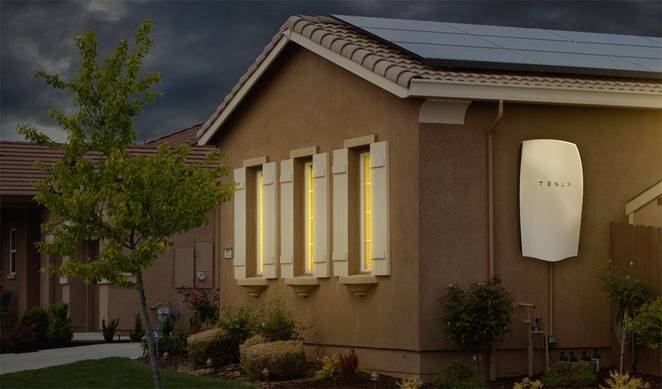The idea of a battery-powered home might seem rather "out there", but according to an article in the Wall Street Journal it might be closer to reality than we think, at least for some homeowners in Arizona, California, Hawaii, Massachusetts, New York and Vermont.

Tesla Powerwall battery powered home
The WSJ reports that some municipalities in those states are in the midst of revamping their electrical grids, and one idea is to use batteries to make them more efficient. The average homeowner may not notice any diffeence, as the batteries will be housed in special neighborhood junction boxes or substations, out of view.
Electricity companies are considering using the specialized batteries because they're able to harness renewable energy sources, which means they'll be less reliant on other forms of electricity. "Without batteries and other means of energy storage, the ability of utility companies to deliver power could eventually be threatened,” The WSJ article notes. “Solar power, especially, tends to generate electricity only at certain times—and it’s rarely in sync with a home’s needs.”
Two companies, Sonnen and Tesla, both made headlines in the aftermath of recent hurricanes by helping to provide power to some homes in affected regions using batteries. Both companies reported that batteries are very useful sources of energy when used in combination with rooftop solar panels.
Now, a real estate developer called Mandalay Homes says it will build 4,000 new, "ultra-energy efficient"homes powered by 8 kilowatt-hour batteries built by Sonnen. Mandalay says the homes will be built at a new community in Prescott, Arizona, and says the development may eventually become the largest home energy storage project in the U.S.
Meanwhile in Vermont, Tesla Energy and Green Mountain Power are teaming up to offer a battery called the Tesla Powerwall to homeowners for the price of $15 per month. The Tesla Powerwall is a special, 13.5 kilowatt-hour battery which retails at $5,500, and is powerful enough to run an entire house, which is especially useful at times when the grid might be strained by higher than normal demand.